桑皮纸:两百年不腐“宝画”背后的秘密
故事要从故宫的东北角说起,这是当年乾隆皇帝为自己退位居住而预建的倦勤斋,紫禁城最奢华的宫殿。2002年筹备故宫大修之时,倦勤斋成为重中之重。进入倦勤斋,映入眼帘的是一幅画满了紫藤萝的通景画,面积达170多平方米。经历200多年的岁月风雨,它如何奇迹般地保存了下来?
In the northeast corner of the Forbidden City, a courtyard named Juanqinzhai was built by Emperor Qianlong as his retirement residence. It was the most luxurious palace in the Forbidden City. In 2002, the Juanqinzhai was paid special attention during renovation of the Forbidden City. Upon entering the Juanqinzhai, one could see a landscape painting full of purple vines, covering an area of more than 170 square meters. After more than 200 years, the painting is in a miraculously mint condition.
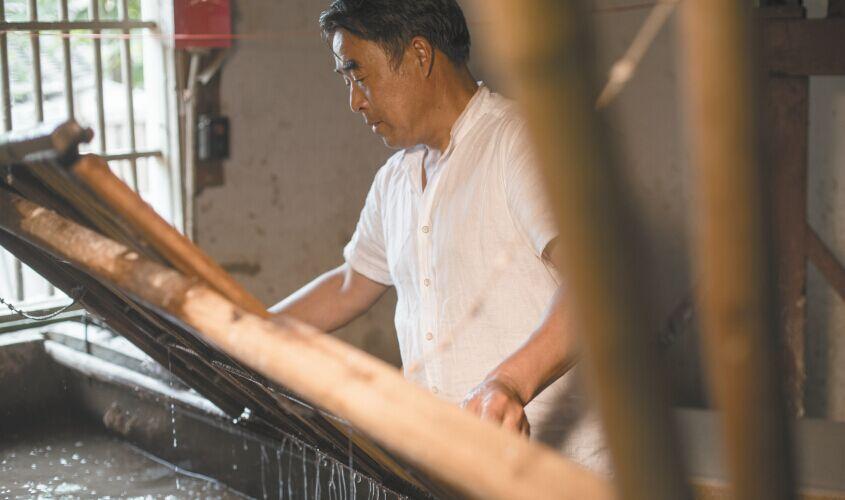
原来,在通景画背面有一种特殊的装裱纸,修复人员以残存的纸样为线索,发现这是一种以桑树皮为原料的纸张,极为坚韧,承拉力强。专家认为要修复倦勤斋,就必须找到这种神奇的纸!最终工作人员找到安徽王柏林制作的桑皮纸作为修复用纸。这种桑皮纸耐折度高达9000多次,是人民币用纸的3倍。
A special mounting paper was discovered at the back of the landscape painting. Based on the remaining paper samples, the restorers found that this paper was made of mulberry bark which is extremely tough and full of strength. So, experts decided to find this legendary paper in order to repair Juanqinzhai! Finally, the staff found the mulberry paper made by Wang Bailin, a handicraftsman in Anhui Province. The folding endurance of this kind of mulberry paper is as high as 9,000 times, which is three times that of RMB paper.
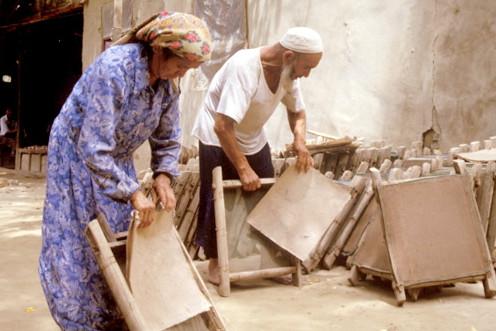
由此,神秘的桑皮纸重新进入了大众的视野。桑皮纸,起源于汉代,其制作技艺比蔡伦改进的造纸术还早300多年。它也是古丝绸之路上的使者,到明清时期,中原与新疆交流频繁,出自新疆的桑皮纸也为中原地区人们所用。可以说,丝绸之路有多长,桑皮纸的传播就有多长,它成为古代中原与周边地区、中国与亚欧各国交往的重要载体。
As a result, the mysterious mulberry paper reentered the public field of vision. Mulberry paper originated in the Han Dynasty, more than 300 years earlier than Cai Lun’s improved papermaking technology. It was also an emissary on the ancient Silk Road. In the Ming and Qing Dynasties, there were frequent exchanges between the Central Plains and Xinjiang and the mulberry paper from Xinjiang was also used by people in the Central Plains. The fame of the mulberry paper was spread as far as the silk road. It has become an important carrier of exchanges between the ancient Central Plains and surrounding areas, China and Asian and European countries.
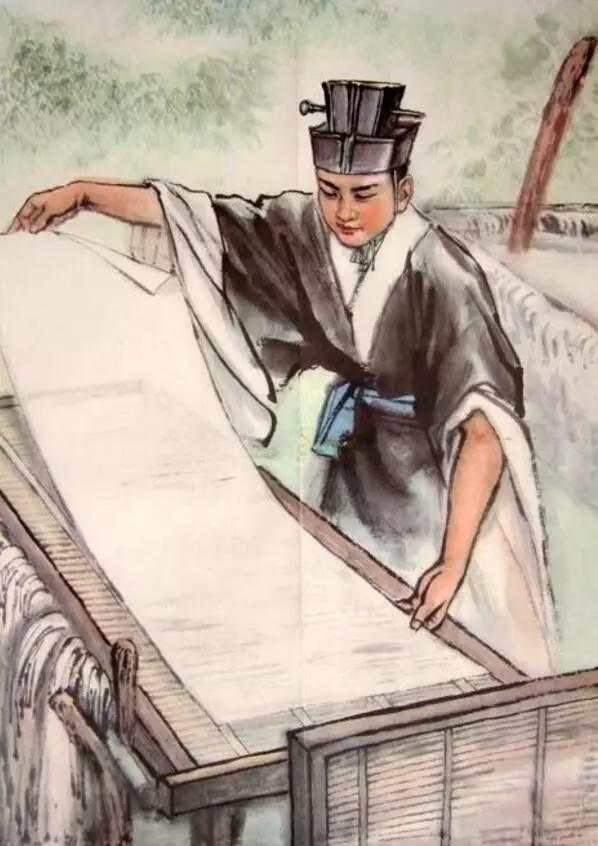
桑皮纸颠覆了“纸是脆弱的”概念,其最大特点是柔软、拉力强、不褪色、吸水力强,这也是倦勤斋屋顶的通景画经历了百年温度湿度变化、热胀冷缩依然保存下来的原因。桑皮纸纯正的纤维构造及其特殊的香气,还可防蛀虫叮咬。古时多用于高档书画的装裱、书册典籍的印刷,民国时期曾有用桑皮纸印制的钞票。中等质量的桑皮纸一般用于包装茶叶、草药、食物等。但随着现代化造纸工业成品的出现,桑皮纸由于纯手工打造、产量少,逐渐退出了人们的日常生活。
Mulberry paper contradicts the idea of "paper is fragile". It is characterized by softness, strong tensile force, slow to fade and strong water absorption. This is also the reason why the landscape paintings on the roof of Juanqinzhai have survived the changes of temperature and humidity, heat expansion and cold contraction for hundreds of years. The pure fiber structure and special aroma of mulberry paper can also prevent moth bites. In ancient times, it was mostly used for mounting high-grade calligraphy and painting, printing books. In the 1910s, banknotes were printed with mulberry paper. Medium quality mulberry paper is generally used for packaging tea, herbal medicine, food, etc. However, with the emergence of modern paper industry products, mulberry paper has gradually withdrawn from people’s daily life due to its pure hand-made and low output.
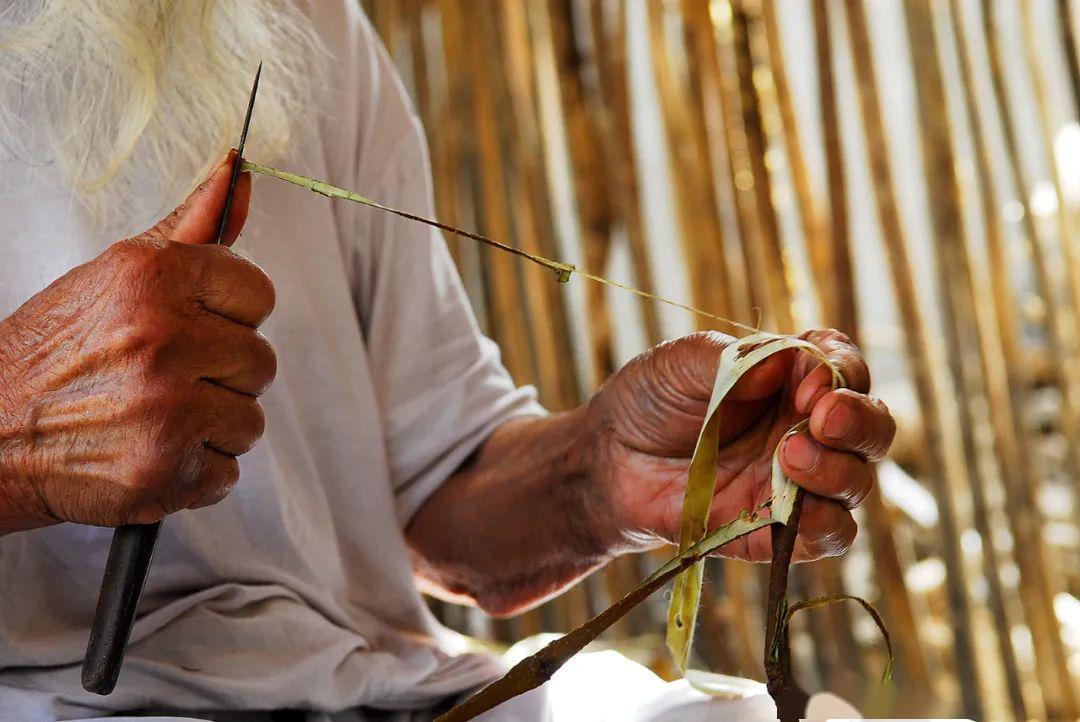
桑皮纸的制作工艺相当复杂,总共有72道纯手工工序。以桑树枝内皮为原料,经过伐条、浸泡、剥皮、锅煮、过滤、锤捣、发酵、捞纸、滤水、晾晒、揭纸、分类、打磨等工序。其使用的特定材料、添加剂的量等都蕴含着科学原理,这正是它柔软而坚韧的秘诀所在。
The production process of mulberry paper is quite complex as there are 72 pure manual processes. Mulberry branch endodermis was used as raw material through cutting, soaking, peeling, boiling, filtering, hammering, fermentation, paper fishing, water filtering, air drying, paper uncovering, classification, grinding and other processes. The specific materials used and the amount of additives contain scientific principles which is the secret of its softness and tenacity.
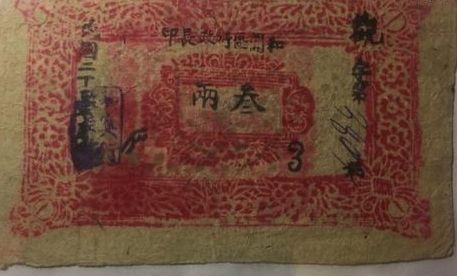
时代更迭,在这门古老技艺濒临消失、传承制作人屈指可数的时候,故宫大修唤醒了桑皮纸手工制作技艺。因为人们发现,桑皮纸在传统书画创作、修复方面的作用,是现代机器产品所不能替代的。2006年,维吾尔族桑皮纸制作技艺被列入首批国家级非物质文化遗产名录;2008年,安徽桑皮纸制作技艺列入第二批国家级非物质文化遗产名录,桑皮纸的科学价值、人文价值、历史研究价值得到重视。如今越来越多的年轻人回到家乡学习桑皮纸的制作,将这一手工技艺传承下去。
The ancient craft was on the verge of disappearing with a small number of inheritors when the renovation of the Forbidden City handed a second lease of life to the craft of handmade mulberry paper. Artists became aware that the role of mulberry paper in traditional painting and calligraphy creation and restoration could not be replaced by modern machine products. In 2006, the production technology of Uygur mulberry paper was listed in the first batch of National Intangible Cultural Heritage List; in 2008, the production technology of Anhui mulberry paper was listed in the second batch of National Intangible Cultural Heritage List, and the scientific value, humanistic value and historical research value of mulberry paper were valued. Nowadays, more young people are coming back to their hometowns to learn the art of making mulberry paper and to pass on this craft.










